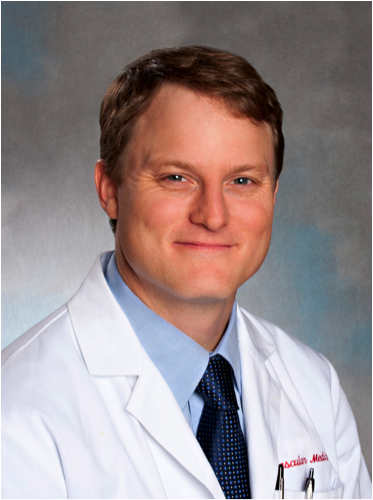“The original definition of QoL is `the difference between what the patients perceive and what they actually have,’ and it impacts physical, mental, and social well-being,” explained Prof. Ileana L. Piña (Central Michigan University, MI, USA) [1]. HRQoL, which is often measured in trials, is a sub-entity of QoL that encompasses health perceptions, functional status, and psychosocial status. In terms of heart failure (HF), the patient’s perspective of health status is based on symptoms like fatigue, dyspnoea, and oedema, which lead to functional limitations entailing physical, emotional, and social aspects.
Instruments widely used and accepted to measure HRQoL in HF are, for example, the Minnesota Living with Heart Failure Questionnaire (MLWHFQ) and the Kansas City Cardiomyopathy Questionnaire (KCCQ). When using these instruments to evaluate HRQoL in a randomised controlled trial, much needs to be taken into consideration. “Both instruments have a large placebo component. So, if you do absolutely nothing, both of them get better in scoring,” Prof. Piña elaborated. To illustrate, she pointed out a study in which, after 4 months of assessment of valsartan as add-on medication in HF, the placebo group had a greater improvement in MLWHFQ than the valsartan group. “If we looked at just objective worsening, more patients worsened who were on placebo, and fewer patients worsened on the drug, which is another way of looking at the scores,” she commented on the same investigation. So, it is essential to always quantify the clinical changes to evaluate the benefits of a treatment.
Another consideration is the timing of measuring QoL. For example, in the PROVE-HF trial (NCT02887183), improvements in KCCQ scores occurred as early as week 2 [2]. Prof. Piña suggested that a plan for testing QoL at different times of a study could be appropriate. Furthermore, quantifying changes in QoL not only matters during trials, but also in monitoring patients over time for clinically important changes.
Focusing on QoL, different classes of HF drugs often present with pros and cons. For example, β-blockers decrease mortality but do not increase exercise capacity, and spironolactone reduces hospitalisations but induces only modest HRQoL improvement in HF patients with preserved ejection fraction. On the other hand, milrinone improves symptoms and thus makes patients feel better, yet mortality is high. Trials on inhibitors of the renin-angiotensin-aldosterone system have demonstrated clear and consistent results for benefits in mortality but have been inconsistent in QoL results.
Various outcomes in trials may be intertwined with QoL, but are nonetheless difficult to capture: for example, how can a decrease in hospitalised days be assessed by a questionnaire and will the patient sense this benefit? To illustrate, Prof. Piña drew attention to the DAPA-HF trial (NCT03036124) that showed clear improvements in hospitalisation already detectable within the first 3 months but, in contrast, only modest ameliorations in KCCQ scores [3].
“We have trade-offs: are we content to say ‘no higher mortality’ and do nothing else,” she asked pointing to one of the remaining open questions [1]. Prof. Piña concluded that she implemented the evaluation of HRQoL with different instruments in her clinic at different times to get an impression of the impact the disease has on her patients and she underlined the benefit of engaging the patients in shared decision making.
- Piña IL. Do we improve quality of life in heart failure patients with drugs? Heart Failure and World Congress on Acute Heart Failure 2021, 29 June–1 July.
- Piña IL, et al. JACC Heart Fail. 2021;9(1):42–51.
- McMurray JJV, et al. New Engl J Med 2019;381(21):1995–2008.
Copyright ©2021 Medicom Medical Publishers
Posted on
Previous Article
« Trastuzumab associated with cardiotoxicity in breast cancer Next Article
Heart failure patients might be at an increased risk for head and neck cancer »
« Trastuzumab associated with cardiotoxicity in breast cancer Next Article
Heart failure patients might be at an increased risk for head and neck cancer »
Table of Contents: HFA 2021
Featured articles
Inconclusive results for dapagliflozin treatment in heart failure
Late-Breaking Trials
Iron substitution improves LVEF in intensively treated CRT patients with iron deficiency
Novel mineralocorticoid receptor antagonist effective irrespective of HF history
Iron substitution in iron-deficient HF patients is highly cost-effective
Omecamtiv mecarbil might be less effective in patients with atrial fibrillation or flutter
Vericiguat effective irrespective of atrial fibrillation status
Baroreflex activation: a novel option to improve heart failure symptoms
Beta-blocker withdrawal to enhance exercise capacity in heart failure?
Inconclusive results for dapagliflozin treatment in heart failure
Computerised cognitive training improves cognitive function in HF patients
COVID-19 and the Heart
COVID-19-related HF: from systemic infection to cardiac inflammation
Myocardial infarction outcomes were significantly affected by the pandemic
TAPSE effective biomarker associated with high-risk of severe COVID-19
COVID-19 in AF patients with HF: no higher mortality but longer hospital stay
Cancer and the Heart
Heart failure patients might be at an increased risk for head and neck cancer
Trastuzumab associated with cardiotoxicity in breast cancer
Heart Failure Prevention and HRQoL in the 21st century
Psychoactive substances put young people at risk of cardiovascular disease
The challenge of improving the quality of life of heart failure patients
SGLT2 Inhibitors in Heart Failure
Empagliflozin linked to lower cardiovascular risk and renal events in real-world study
Efficacy of dapagliflozin and empagliflozin not influenced by diabetes status
Biomarker panel predicts SGLT2 inhibitor response
Best of the Posters
Real-world study suggests sacubitril/valsartan benefits elderly patients with HF
Proenkephalin: A useful biomarker for new-onset heart failure?
Weight loss associated with increased mortality risk in heart failure patients
Echocardiographic parameters linked to dementia diagnosis
Related Articles
August 19, 2021
Vericiguat effective irrespective of atrial fibrillation status

August 20, 2021
Letter from the Editor
© 2024 Medicom Medical Publishers. All rights reserved. Terms and Conditions | Privacy Policy

